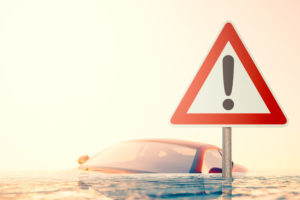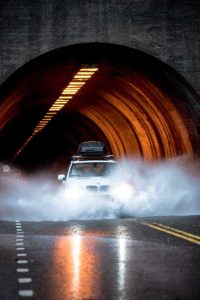When you’re in the market to buy a used car, it seems there’s no end to things you need to check to make sure that you aren’t buying a lemon. It’s no secret that water and electronics don’t mix. Knowing the signs of water damage in cars can help you avoid the long-term costs of accidentally buying a dud.
Signs of Water Damage in Cars
 Unfortunately, a VIN check doesn’t always tell you if a car has been water damaged. The previous owner could be deliberately hiding the damage or may not know that the vehicle ever experienced water damage. In addition, water damage that was not reported to the insurance company may not show up on a VIN check.
Unfortunately, a VIN check doesn’t always tell you if a car has been water damaged. The previous owner could be deliberately hiding the damage or may not know that the vehicle ever experienced water damage. In addition, water damage that was not reported to the insurance company may not show up on a VIN check.
Whatever the reason, a physical inspection can not only check that the vehicle has not experienced water damage, it can help identify upcoming repairs that may be needed to keep the car in good working condition. Here are our top tips to watch for when you’re looking for water damage in a vehicle.
1. The Cabin Has a Strange Smell
Used cars can hold onto a lot of smells from their previous owners. Pets, cigarettes, gym bags, and old spilled food or drink can lead to unpleasant odors.
Water damage in a car leaves a distinct, musty, mildew smell that doesn’t go away no matter how many air fresheners you add or how long the windows are open.
2. There is a Visible Water Line in the Cabin
A car that has sat in water for any amount of time may have a visible watermark on the upholstery or in the footwells.
Similarly, a car that has been submerged for an extended amount of time may have a water line visible on the exterior of the vehicle due to paint fading.
3. The Electronics Have Unexplained Problems
Shorts, skips, and buttons that don’t work like they should are all signs of problems in a vehicle’s electronic system.
Be sure to test out the candidate vehicle’s electronics to make sure that everything is in good order before you make a purchase.
 4. You Notice Rust or Corrosion on the Vehicle
4. You Notice Rust or Corrosion on the Vehicle
Vehicles that have been in northern climates often have rust on the undercarriage or near the wheel wells due to the salt used to de-ice the roads during winter.
Exposure to salt water isn’t the only thing that can rust a vehicle’s undercarriage prematurely. Rust can develop on a car that has been submerged. Check for signs of corrosion in the engine, especially on connections and wires. Inspect the bottom of the vehicle and take note of any visible corrosion.
T3 Atlanta Can Check for Signs of Water Damage in Cars
If you’re in the market for a new used Toyota, Lexus, Nissan, or Infiniti and want a third-party inspection on the vehicle, call T3 Atlanta. We’ll inspect your potential new car for water damage. We’ll also give you an overview of the condition of the vehicle and advise you of any repairs or red flags we see. We’re happy to help save you the hassle of buying a car that costs you more than it’s worth.










Leave a Reply
You must be logged in to post a comment.